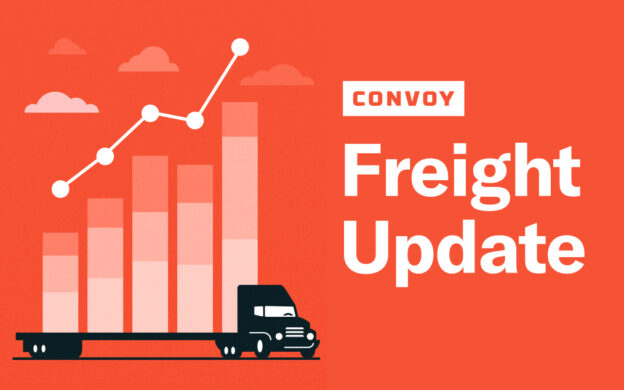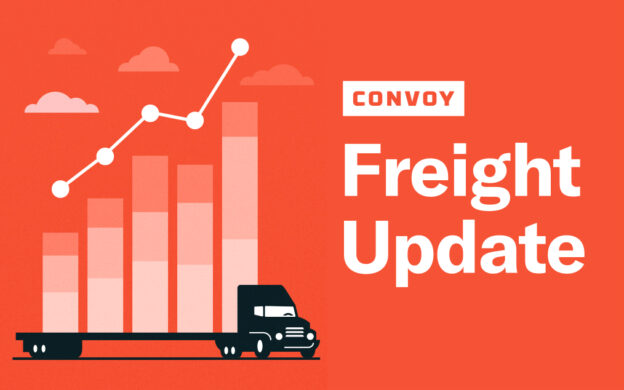Trucking Hiring Sizzled in July, Cooler Wage Growth Might be a Good Thing
Freight Research • Published on August 6, 2021
Trucking industry payrolls increased in July, building on an unexpectedly strong June according to the Bureau of Labor Statistics’ Current Employment Situation report published this morning. Employment at trucking firms is now 1.49 million (seasonally adjusted), up 2.5 percent from July 2020 but still 2.2 percent (33,000 workers) below where it stood before the pandemic. June employment for the trucking industry was also revised upward by 1,900 workers. (The BLS employment numbers for the trucking industry exclude self-employed owner-operators and include back office and support workers at trucking companies.)
July marks the second consecutive month of strong headcount gains, perhaps signaling that recent hiring constraints are starting to ease — though July’s increase was half the pace from June suggesting that we’re not entirely out of the woods yet. Average wages in the transportation and warehousing industry have been growing at an accelerating pace.
It’s important to note that this metric on average wages can be easily misinterpreted: Strong wage gains with lackluster headcount gains means that trucking firms are bidding against each other for the same workers or are handing out raises as a proactive retention strategy. Slower growth in average hourly earnings combined with payroll growth might actually be a good sign for the trucking industry: It would indicate an influx of less experienced workers to the labor force.
Regardless, wage gains are not keeping pace with inflation: Consumer prices were up 5.3 percent annually in June, compared to a 4.9 percent increase for production and nonsupervisory workers in the transportation and warehousing industry. While recent wage gains may feel generous to employers, they are quickly eroded by rising prices across the economy.
Periods of prolonged labor market tightness typically drive three conversations: About easing regulatory barriers to entry, about opening access to foreign workers, and finally, about investments in automation. We are seeing sparks of all three in the trucking industry today. Provisions of the bipartisan infrastructure bill under consideration in Washington, D.C. would expand a pilot program for 18-21 year old truckers and there are some reports of more trucking firms looking into various foreign worker visa programs. While there is growing attention to automated trucking as a long-term solution, there are likely to be more immediate impacts from near-term productivity enhancing investments such as Drop and Hook programs.
Despite early-summer fears that vacation days would eat into driver availability, trucker vacation plans appear to be in line with historic norms. According to the results of a survey that Convoy conducted in July 2021, 15 percent of truckers say they plan to take more vacation time than normal between now and the end of the year — the same share who say they plan to take less vacation time than normal.
Beyond the trucking industry, the labor force participation rate remained stubbornly low, down nearly 2 percentage points from January 2020. A growing body of research suggests that expanded federal unemployment insurance benefits are, at worst, a very modest disincentive to labor force participation. Accelerated retirements and childcare responsibilities appear to be a more likely culprit: Older workers approaching or just past age 65 and parents of school-age children have seen the biggest and most enduring declines in labor force participation — respectively down 1.8 percentage points for workers age 65+ and down 1 percentage point for working parents (both relative to 2019). If the participation rate among these two groups had declined in line with others, there would be 7.5 million more workers in the labor force.
While it is plausible that working parents will return to work as schools reopen, it’s harder to imagine older adults returning to the labor force. A key question is what drove these older workers to retire during the past year? There are two possible explanations: Public health concerns associated with the pandemic, or more robust retirement savings balances due to buoyant financial markets.
At this point, most trucking firms have moved past the denial stage of hiring grief — there’s no more hoping and wishing for a magic, hidden pool of workers twiddling away on the sidelines of the labor market. They’re raising wages (though probably not by enough) and hunting for other more digestible fixes.
View our economic commentary disclaimer here.


